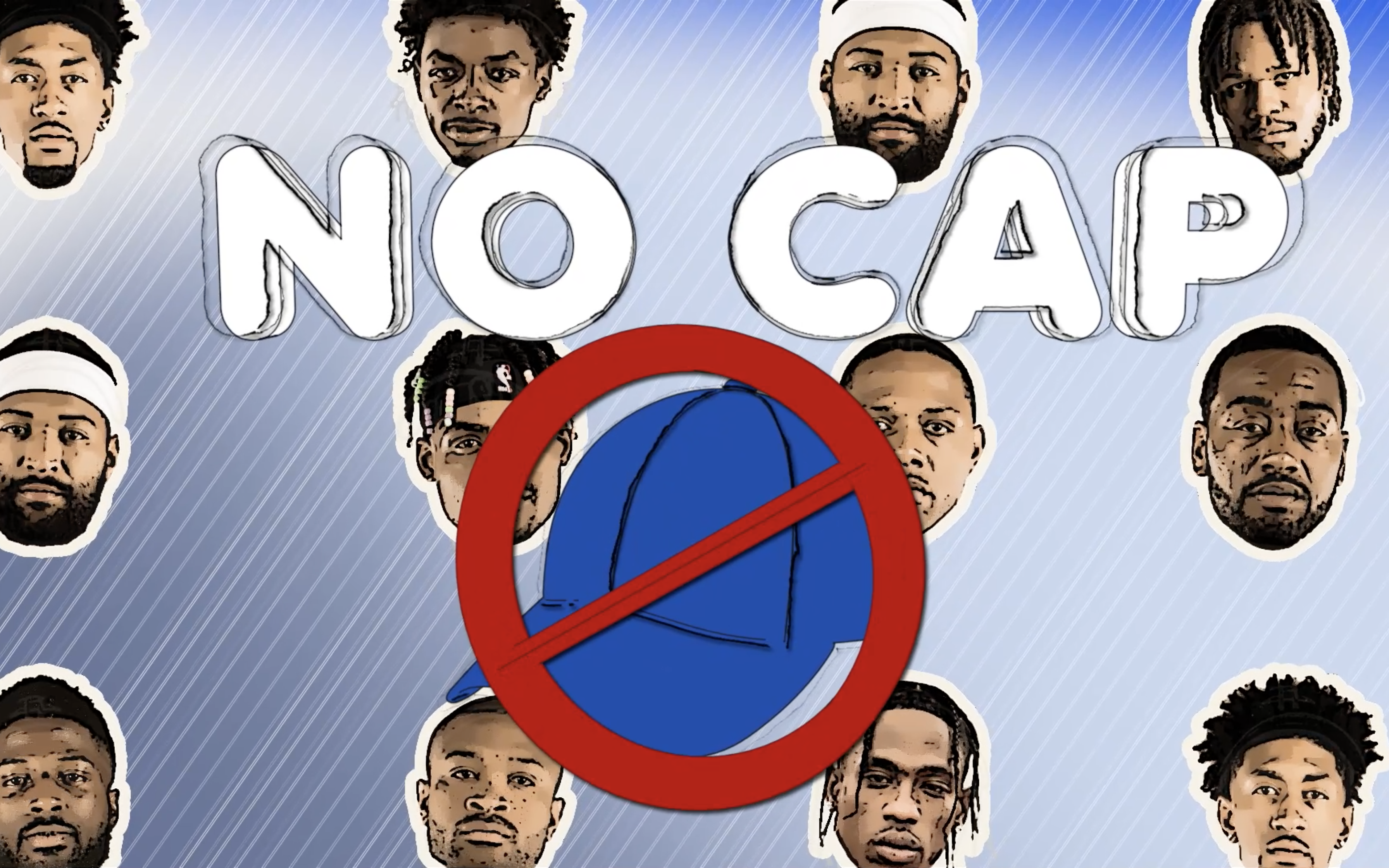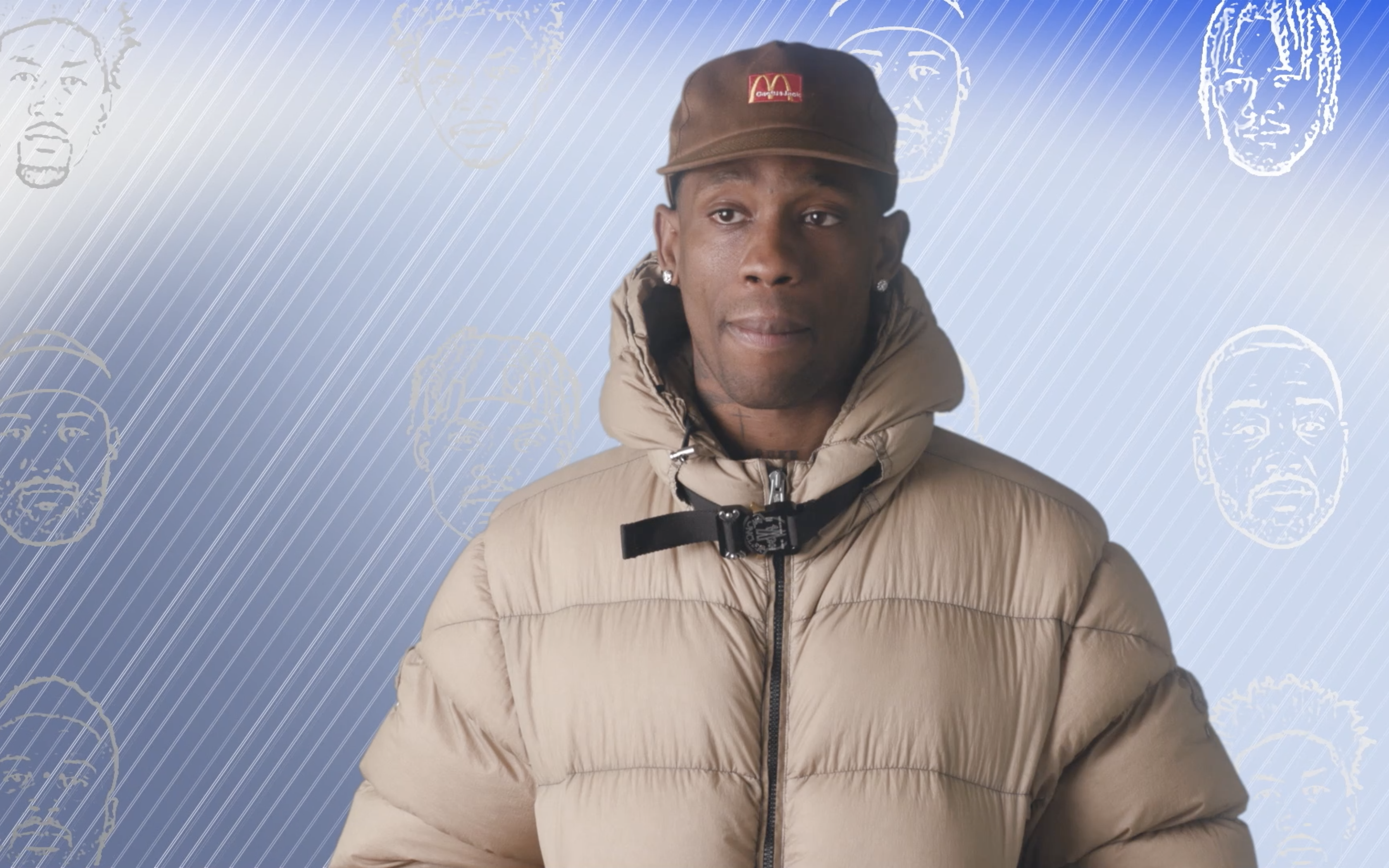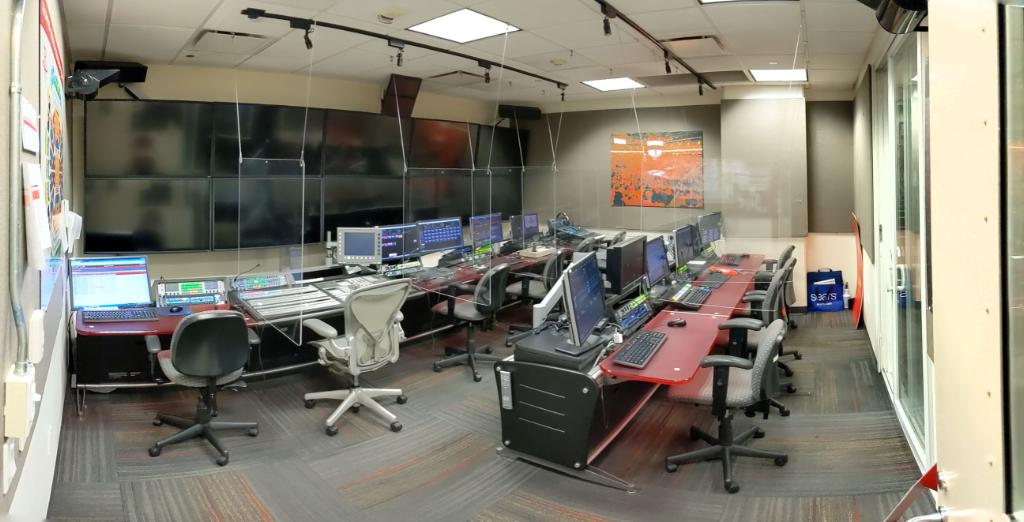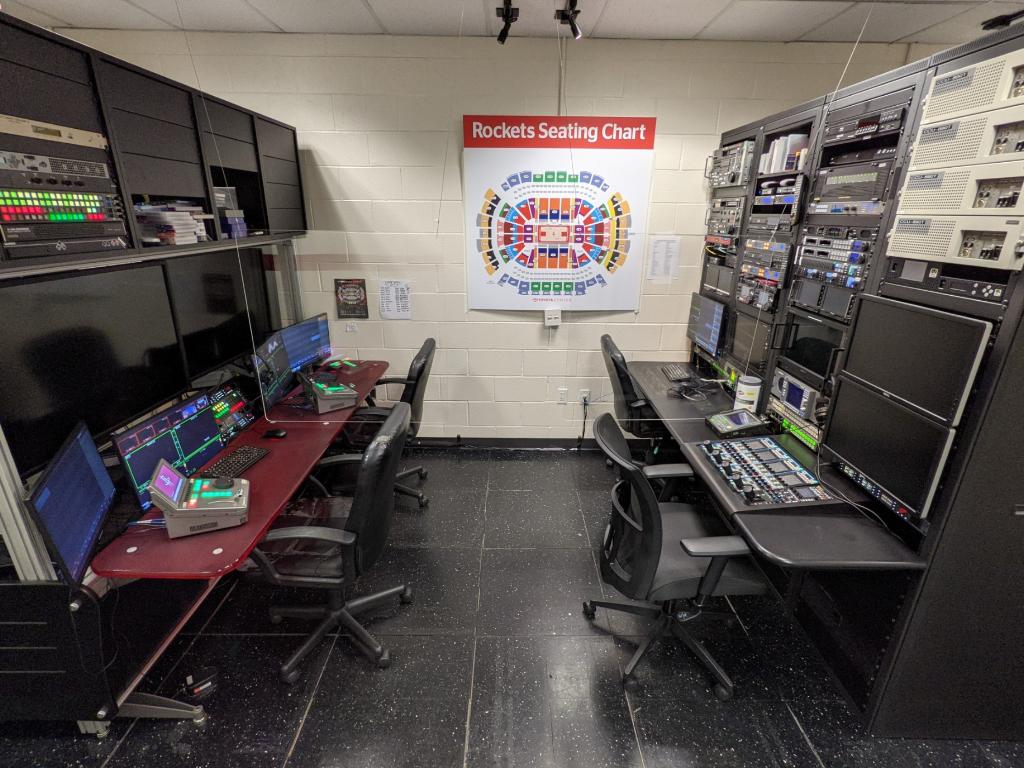On the Hardwood: Houston Rockets Work With League, RSNs To Produce Away Radio Broadcasts in Toyota Center
The radio crew will be in action for all 72 regular-season games
Story Highlights
The doldrums of 2020 may be in the past, but 2021 is still presenting challenges to in-venue production teams. Now out of the Orlando bubble, NBA organizations are hosting games in their home arenas and navigating the continuing difficulties of the pandemic. Like SVG’s At the Ballpark and On the Gridiron series, On the Hardwood will take a look the hardships, creative ideas, and teamwork of NBA franchises.
NBA production teams have continued to push the technological envelope this season. Some have reconfigured their digital app while others have rejiggered the physical structure of their control room. The Houston Rockets crew is in full throttle, facilitating away radio broadcasts while the team is traveling on the road.
“It’s different this year since our regional sports network and radio crew is not traveling with the team,” says Matthew Tape, director, broadcast and video production, Houston Rockets. “We’re utilizing every bit of the NBA’s new high-speed area network.”
MORE ON THE HARDWOOD INTERVIEWS:
- After Assisting Fox Sports Sun, Miami Heat Retrofit Control Room for Games in AmericanAirlines Arena
- How Kyle Campbell Balanced Productions for the NBA’s New Orleans Pelicans, NFL’s Saints
- Atlanta Hawks Honor Legacy of Martin Luther King Jr. in First of Season-Long ‘Unity Nights’
- Golden State Warriors Connect Team, Chase Center to Fans at Home Through Dub Hub Experience
- Milwaukee Bucks Leverage NBA Bubble Experience for 2020-21 Slate at Fiserv Forum
- Sacramento Kings Improve In-Venue, At-Home Experience With Intel True View at Golden 1 Center
- Portland Trail Blazers Manage LED Displays at Moda Center To Educate, Entertain Fans on League Pass
- Charlotte Hornets Redesign Mobile App To Bring Spectrum Center Content to the Home
- Minnesota Timberwolves Feature On-Court Media Day With Drone Flyover at Target Center
- Despite Limited Fans, Cleveland Cavaliers Keep the Energy Up at Renovated Rocket Mortgage FieldHouse
- Chicago Bulls Use Year-Old Videoboard, Mobile Predictive Gaming To Draw Up Production Plan
- Philadelphia 76ers Continue Treasured Traditions at Wells Fargo Center
- Denver Nuggets Repurpose RSN Broadcast With Some In-Venue Flavor
- With Empty AT&T Center and Reduced Game-Day Staff, Spurs Add ‘Digital Arena’ to Mobile App
On the Road: Toyota Center Becomes Hub for Remote Radio Broadcasts
Like the NFL’s Indianapolis Colts, the Houston Rockets are giving fans something to listen to when they’re away from Space City. The franchise is accustomed to producing the radio broadcasts, but, in a year when traveling has been limited, the staff is getting creative with workflow. The television broadcast airs on the team’s dedicated regional sports network, AT&T Sports Southwest, but, for the radio call, Tape and his team are working with the league and RSNs around the country.
“There are basically eight feeds that we get in real time from the league, which we’re able to change out as we see fit,” he says. “Normally, it’s a clean-cut feed from the home RSN: both under-the-basket handhelds, a slash, dunk cams, and an RSN-controlled camera that they can control. In some cases, some RSNs will ask for two or maybe even three [other] camera feeds.”
During road games, the radio team is positioned in its customary perch inside the Toyota Center. For connection with the away arena, it has a direct line of communication to operators in the other city. The talent call the games off the venue’s massive videoboard, which displays the camera feeds sent by the league’s network.
“We have a lot of fiber connections running from the league’s network in Secaucus, NJ, to our area in Houston,” Tape explains. “With our talent calling the game off the videoboard, the NBA sends over statistics, and we throw it up to our scorebug and put that up on the screen as well. It’s also pretty cool that we’re able to get the clock within tenths of a second from all the video feeds.”

Fans allowed in the stands at Toyota Center are treated to player-centric vignettes on the videoboard.
The production crew is getting accustomed to producing away broadcasts. During a normal year, it would most likely be prepping for the next home game but wouldn’t necessarily be officially on the clock since the team is traveling. These days, with the need to accommodate fans whenever possible, the crew is finding its footing and developing solutions for both production and non-production challenges.
“Due to building protocols,” Tape notes, “we’re the only ones in the building. We’re turning on all of the lights, letting staff members in, and getting their food from the fridge. Sometimes, the parking-garage door is closed or something that you don’t think is an issue becomes an issue on some of these away games.”
Welcome Back: LiveU Technology Handles Fan Activations on the Concourse
Toyota Center is one of the few league venues allowing selected fans through the turnstiles. With around 3,100 fans in the seats, the videoboard is being populated by the routine player features and other video elements. Fans are expected to be responsible when they’re at the game, and, without much access to the court, the production team is developing new ways for them to get involved without getting near the players. LiveU’s cellular bonding and wireless connectivity is shifting fan activations from courtside to the concourse.

Popular hip-hop artist Travis Scott is one of the local celebrities featured in the in-venue show during Rocket games.
“For contests where a contestant has to shoot on the net,” Tape explains, “we’re now doing that on the concourse. We’ve been shooting [these elements] with LiveU, and we’ll eventually have a partial activation in a suite in the lower bowl. The latency has been challenging, especially if you have something like a shooting challenge where we start a clock in the control room and have to
offset the 1- to 3-second delay.”
Access to the court is also an issue for the production crew. Entertainment still plays a significant role in the run of show, but the people providing the theatrics have been relocated to various areas in the arena.
“Our game ops have changed drastically,” notes Tape. “Our DJ booth and dancers used to be courtside, but now both are on platforms along the concourse. All of our entertainment groups sometimes perform in a suite where all of the seats have been taken out.”
Clean Control Room: Staffers Observe Health and Safety Rules
Besides following league and internal protocols, the control room is abiding by its own set of safety regulations. Besides a hefty amount of testing for days prior to any home game and on the day of a game, four colored tiers are in effect, with access limited to specified credentialed personnel. The medical tests are commonplace around the NBA, but the Rockets ensure a clean bubble for the production team through vigilance and self-policing.
“We’ve been told to wash our hands about 100 times,” says Tape. “We have sanitization dispensers on every other wall. There are also security guards at every point in the building where individuals could possibly cross into different zones.”
Hand washing, face coverings, and social distancing are a few ways to combat the spread of COVID-19, but the crew has taken cleanliness to another level. Microphones, cameras, keyboards, and other production equipment are thoroughly cleaned before, during, and after a game at approximately one-hour increments.
“Full-time staffers are wiping down every station before the crew arrives, and [crew members] are asked to wipe down their own station,” says Tape. “If it’s a high-traffic area, it’s supposed to be wiped down every hour, and, during the postgame, it’s supposed to be wiped down before people leave. We even have a checklist that I have to sign to see that certain things are specifically cleaned.”
The Ones Who Get It Done: Notable Names on Rockets’ Production Team
Radio broadcasts are another responsibility on Tape’s plate, and, to execute the productions to perfection, he relies on the crew that surrounds him on a nightly basis. The Rockets’ roster has seen familiar faces leave and new faces arrive, but, in the control room, the crew’s core members have remained the same.
“Senior Producer Michael Canella has had to deal with multiple scheduling conflicts and contact-tracing issues,” says Tape. “If one person gets sick, there are new protocols for parking, getting into the building, and where you can go and can’t go. Producers Paul Woo and Ben Sledge and Motion Graphics Designer Dave Congdon are normally shooting videos and creating content, but they’ve stepped up since we’re all-hands-on-deck for every game that we play.”
After a three-game road trip to Oklahoma City and Memphis, the Rockets return to Toyota Center to host an intrastate rivalry with the San Antonio Spurs on Saturday, Feb. 6 at 8 p.m. ET.


